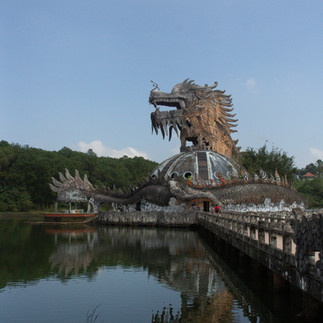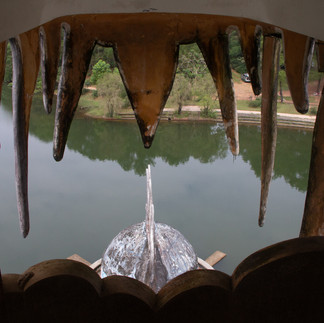Colombo, Sri Lanka
Photography by Lucas Stoffel can be licensed on Shutterstock and Getty Images

Photography by Lucas Stoffel Fine art prints available on Etsy.
The essence of Sri Lanka is gracefully encapsulated in its intricate mosaic of temples, especially prominent in the Northern regions where spirituality intertwines with daily life. The Nallur Kandaswamy Kovil in Jaffna, shrouded in a cloak of sublime devotion and vibrant rituals, beckons pilgrims and travelers alike into its sacred precincts. Ornate gopurams (towers) adorned with a pantheon of Hindu deities rise majestically, marking the sacred spaces where resonating bells, fragrant incense, and rhythmic drums weave an enchanting tapestry of devotion. In contrast, the serenity enveloping the ancient Jaffna Public Library, with its colonial architecture and pensive ambiance, tells stories of resilience and remembrance, offering a delicate balance to the spiritual vibrancy of the north.
The Ancient Temples of Sri Lanka's North
In Anuradhapura, Sri Lanka, is a remarkable ancient stupa and among the must-visit Buddhist temples in Sri Lanka. Built during the 3rd century BC, it stands at a towering height of 122 meters and is one of the tallest brick structures in the world. This architectural marvel, adorned with intricate stone carvings and surrounded by a serene ambiance, holds immense spiritual significance for Buddhists. Visiting Jetavanaramaya offers a glimpse into the rich history and cultural heritage of ancient Sri Lanka.
Photography by Lucas Stoffel
Train to Kandy: A Journey through the Heart of Sri Lanka
Journeying from the northern plains towards the enchanting city of Kandy, the railways of Sri Lanka unfold a mesmerizing panorama of the island's varied landscapes. As the train chugs along, it snakes through verdant tea plantations where the vibrant green of the tea leaves juxtaposes strikingly against the earthy tones of the countryside. Passengers are treated to glimpses of cascading waterfalls, mist-kissed mountains, and quaint villages where life unfolds at a gentle, unhurried pace. The journey, much more than a mere transit, becomes a serene meditation, allowing travelers to absorb the fluctuating terrains and cultures that define this splendid isle.

Photography by Lucas Stoffel
The arrival in Kandy, nestled amidst the hills, brings forward a confluence of tradition and natural splendor. The revered Temple of the Tooth, safeguarding the sacred tooth relic of Buddha, stands as an epicenter of spirituality and heritage. Pilgrims clad in white, offerings of fragrant lotus blossoms in hand, tread softly through its venerable halls, as tourists marvel at the delicate frescoes and opulent decorations adorning this sacred site. Encircled by lush hills, Kandy’s tranquil Kandy Lake offers a peaceful retreat, reflecting the town’s splendor on its placid waters.
Glistening Shores: Embracing the Tranquility of Sri Lanka's South
Venturing southwards, the landscape transforms, revealing a coastline where the azure waves of the Indian Ocean caress the golden sands of Sri Lanka’s shores. Bentota, Mirissa, and Unawatuna are but a few names among the many beach paradises that dot the southern coast, each offering a unique charm and a promise of sun-soaked serenity. Whether indulging in the myriad of water sports, savoring the tantalizingly fresh seafood, or merely surrendering to the gentle embrace of the sea breeze, the southern beaches offer a blissful finale to the Sri Lankan journey.
The fortified city of Galle, a UNESCO World Heritage Site, stands as a sentinel at the southern tip of the island. As you wander through the narrow streets of the Galle Fort, the intricate blend of Portuguese and Dutch colonial architecture tells tales of maritime trade, colonial conquests, and the rich tapestry of cultures that have shaped this coastal gem.
From the spiritually rich and historically layered northern temples to the undulating hills and peaceful shores of the south, Sri Lanka unfolds as an island of diverse allure. The scenic train rides, linking the cultural treasures and natural wonders, become a journey through the soul of the country, revealing its many facets and inviting travelers to immerse themselves in its multifaceted charm. Sri Lanka, with its welcoming people, rich traditions, and stunning landscapes, effortlessly weaves a story that remains etched in the hearts of those who traverse its enchanting expanses.






































